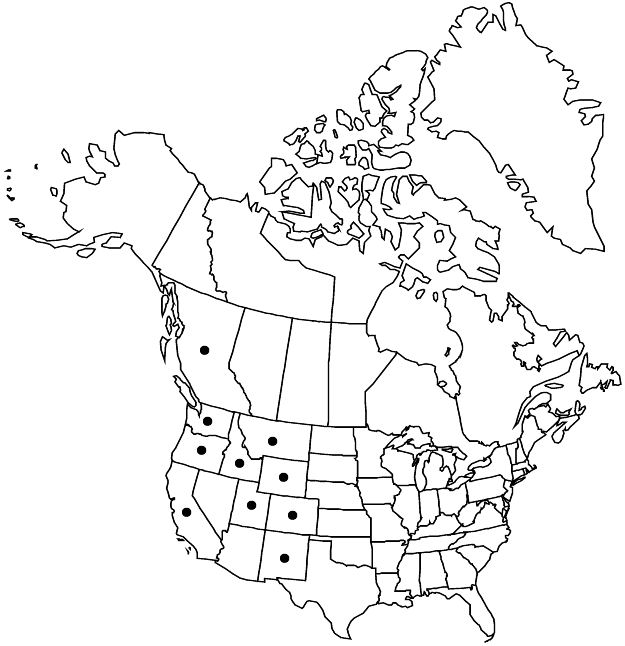Euphorbia myrsinites
Sp. Pl. 1: 461. 1753.
Herbs, usually perennial, occasionally biennial, with taproot. Stems erect or semiprostrate, unbranched or branched, 15–40 cm, succulent, glabrous. Leaves: petiole 0–2 mm; blade obovate, obovate-oblong, lanceolate, orbiculate, or suborbiculate, 2–30 × 3–17 mm, fleshy, base truncate or attenuate, margins entire or finely denticulate, apex acute to obtuse, cuspidate or strongly mucronate, surfaces glabrous; venation and midvein inconspicuous. Cyathial arrangement: terminal pleiochasial branches 2–12, each 1–2 times 2-branched; pleiochasial bracts similar in shape and size to distal leaves; dichasial bracts distinct, suborbiculate or reniform, base truncate, margins entire or minutely denticulate, apex obtuse, mucronulate; axillary cymose branches 0–4. Cyathia: peduncle 0.5–1 mm. Involucre campanulate, 2.4–2.6 × 2.3–2.5 mm, glabrous; glands 4, trapezoidal, 1–1.5 × 1.5–2.5 mm; horns divergent, thick, tips rounded, dilated, 0.5–0.9 mm. Staminate flowers 6–12. Pistillate flowers: ovary glabrous; styles 2.5–2.8 mm, usually unbranched. Capsules subglobose, 5–7 × 5–6 mm, unlobed; cocci rounded to subangular, smooth, glabrous; columella 4.5–5 mm. Seeds brownish to grayish, oblong, 2.8–4.5 × 2–3.2 mm, vermiculate-rugose; caruncle substipitate, trapezoidal or mushroom-shaped, 1.3–1.5 × 0.6–0.8 mm.
Phenology: Flowering and fruiting spring–summer.
Habitat: Scrub oak communities, open ground near forests, shrub-steppes.
Elevation: 0–2400 m.
Distribution

Introduced; B.C., Calif., Colo., Idaho, Mont., N.Mex., Oreg., Utah, Wash., Wyo., s Europe, w Asia
Discussion
Euphorbia myrsinites is cultivated in much of the flora area, where it can tolerate cold winters. In some areas, it can locally escape from cultivation.
Selected References
None.
Lower Taxa
"connate" is not a number. "distinct" is not a number."connate" is not a number. "distinct" is not a number.